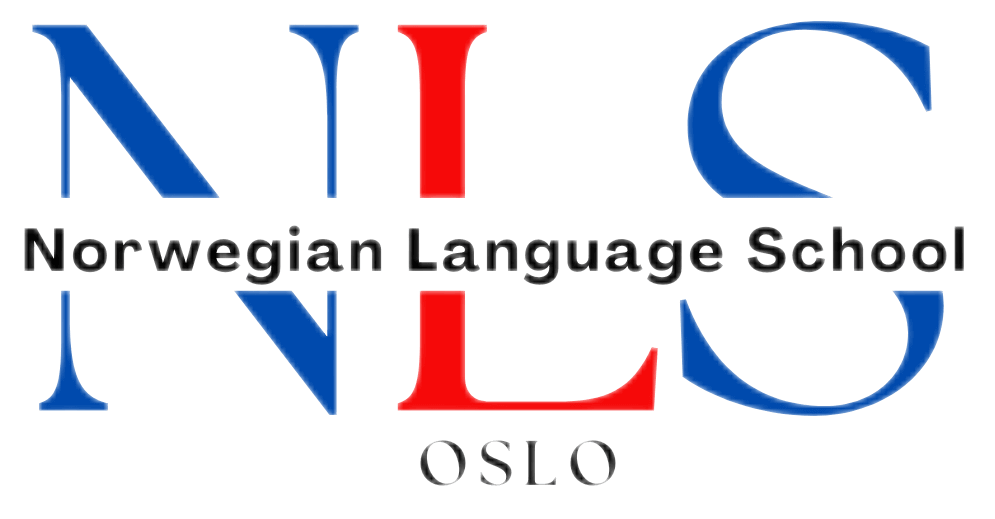

Reaching Conversational Spanish Fluency A Deep Dive into the B1 Level
The B1 level of Spanish proficiency, as defined by the Common European Framework of Reference for Languages (CEFR), represents an intermediate stage in language acquisition. At this level, learners are expected to have a solid grasp of the fundamental structures of the language, enabling them to communicate effectively in a variety of everyday situations. This includes the ability to understand and produce simple texts, engage in conversations about familiar topics, and express opinions or preferences.
The B1 learner is not yet fluent but possesses enough knowledge to navigate social interactions and comprehend the gist of more complex discussions. Achieving B1 proficiency signifies a significant milestone in a learner’s journey. It is a point where one can begin to engage more deeply with the language, moving beyond basic phrases and vocabulary.
At this stage, learners can handle travel-related conversations, discuss personal experiences, and describe plans or aspirations. The B1 level serves as a bridge to more advanced language skills, allowing learners to build confidence and motivation as they progress towards fluency.
Table of Contents
ToggleSummary
- B1 level of Spanish proficiency requires understanding and producing simple and coherent texts on familiar topics.
- Developing vocabulary and grammar skills at the B1 level involves learning and using a wide range of language to express opinions and explain viewpoints.
- Practicing listening and speaking is essential for enhancing fluency at the B1 level, including understanding the main points of clear standard input on familiar matters.
- Using authentic materials such as newspapers, podcasts, and films can improve comprehension and provide exposure to real-life language usage.
- Incorporating cultural understanding into language learning at the B1 level involves exploring traditions, customs, and societal norms of Spanish-speaking countries.
Developing Vocabulary and Grammar Skills at the B1 Level
To thrive at the B1 level, learners must focus on expanding their vocabulary and refining their grammar skills. A robust vocabulary is essential for effective communication, and at this stage, learners should aim to acquire words and phrases related to various themes such as work, leisure, travel, and daily life. Engaging with diverse materials—such as books, articles, and podcasts—can significantly enhance vocabulary acquisition.
Additionally, employing techniques like flashcards or vocabulary lists can aid in retention and recall. Grammar at the B1 level becomes increasingly complex, requiring learners to understand and apply various tenses, including the present perfect and past simple. Mastery of grammatical structures such as conditional sentences and subjunctive forms is also crucial.
Regular practice through exercises and writing tasks can help solidify these concepts. Furthermore, learners should not shy away from making mistakes; they are an integral part of the learning process that ultimately leads to improvement.
Practicing Listening and Speaking to Enhance Fluency

Listening and speaking are two critical components of language learning that significantly contribute to fluency. At the B1 level, learners should actively seek opportunities to practice these skills in real-life contexts. Engaging with native speakers through conversation exchanges or language meet-ups can provide invaluable experience.
These interactions not only enhance speaking abilities but also improve listening comprehension as learners adapt to different accents and speech patterns. In addition to conversational practice, incorporating listening exercises into daily routines can be beneficial. This could involve listening to Spanish music, watching films or series in Spanish, or following podcasts tailored for language learners.
Such activities expose learners to authentic language use and help them develop an ear for nuances in pronunciation and intonation. By consistently practising both listening and speaking, learners can build confidence and fluency over time.
Using Authentic Materials to Improve Comprehension
Utilising authentic materials is an effective strategy for improving comprehension at the B1 level. Authentic materials refer to resources created for native speakers rather than language learners, such as newspapers, magazines, films, and podcasts. These materials provide exposure to real-life language usage, idiomatic expressions, and cultural references that are often absent from traditional textbooks.
Engaging with authentic materials allows learners to encounter language in context, which enhances understanding and retention. For instance, reading a Spanish newspaper article can help learners grasp current events while simultaneously expanding their vocabulary. Watching films or series in Spanish not only improves listening skills but also offers insights into cultural nuances.
By integrating authentic materials into their study routine, learners can develop a more comprehensive understanding of the language.
Incorporating Cultural Understanding into Language Learning
Language learning is intrinsically linked to cultural understanding. At the B1 level, it becomes increasingly important for learners to explore the cultural contexts in which Spanish is spoken. This includes familiarising oneself with traditions, customs, and social norms of Spanish-speaking countries.
Understanding cultural nuances can enhance communication skills and foster deeper connections with native speakers. Incorporating cultural elements into language learning can take many forms. Learners might explore Spanish literature, music, or cuisine as a way to engage with the culture while practising the language.
Participating in cultural events or festivals can also provide immersive experiences that enrich language learning. By appreciating the cultural backdrop of the language, learners can develop a more nuanced perspective that goes beyond mere vocabulary and grammar.
Utilising Technology and Language Apps for Practice

In today’s digital age, technology offers a plethora of resources for language learners at all levels. For those at the B1 level of Spanish proficiency, language apps can be particularly beneficial for practice and reinforcement of skills. Applications such as Duolingo, Babbel, or Memrise provide interactive exercises that cater to various aspects of language learning, including vocabulary building, grammar practice, and listening comprehension.
Moreover, online platforms often feature community forums where learners can connect with others on similar journeys. This sense of community can be motivating and provide additional opportunities for practice through discussions or collaborative learning activities. By leveraging technology effectively, learners can create a personalised study plan that fits their individual needs and preferences.
Engaging in Conversational Practice with Native Speakers
One of the most effective ways to enhance language skills at the B1 level is through conversational practice with native speakers. Engaging in dialogue allows learners to apply their knowledge in real-time situations while receiving immediate feedback on their pronunciation and grammar usage. Language exchange programmes or conversation clubs are excellent avenues for finding native speakers eager to help others learn their language.
These interactions not only improve speaking skills but also foster cultural exchange. Learners gain insights into colloquial expressions and everyday language that may not be covered in formal lessons. Additionally, conversing with native speakers helps build confidence as learners navigate different conversational scenarios.
The more one practises speaking with others, the more comfortable they become in expressing thoughts and ideas in Spanish.
Overcoming Common Challenges in Reaching B1 Fluency
While reaching B1 fluency is an admirable goal, it is not without its challenges. Many learners encounter obstacles such as plateaus in progress or difficulties with specific grammatical structures. It is essential to recognise that these challenges are a natural part of the learning process.
Developing resilience and maintaining a positive mindset can help learners push through these hurdles. To overcome common challenges, it may be beneficial to reassess study methods and seek new resources or approaches. For instance, if vocabulary retention is an issue, exploring different memorisation techniques or engaging with varied materials may yield better results.
Additionally, setting small achievable goals can provide motivation and a sense of accomplishment along the way.
Setting Realistic Goals and Tracking Progress
Setting realistic goals is crucial for maintaining motivation throughout the journey towards B1 proficiency. Learners should establish specific objectives that are measurable and attainable within a given timeframe. For example, aiming to learn a certain number of new words each week or completing a specific number of listening exercises can provide clear targets to work towards.
Tracking progress is equally important as it allows learners to reflect on their achievements and identify areas for improvement. Keeping a journal or using language learning apps that monitor progress can help maintain focus on goals while celebrating milestones along the way. By recognising progress—no matter how small—learners can cultivate a sense of accomplishment that fuels further dedication to their studies.
Exploring Opportunities for Immersion and Language Exchange
Immersion is one of the most effective ways to accelerate language learning at any level. For B1 learners seeking to deepen their understanding of Spanish, exploring opportunities for immersion can be transformative. This could involve travelling to a Spanish-speaking country or participating in local cultural events where Spanish is spoken.
Language exchange programmes also offer valuable immersion experiences without the need for extensive travel. These programmes connect learners with native speakers who wish to learn their language in return. Such exchanges create an environment where both parties benefit from practising their respective languages while gaining insights into each other’s cultures.
Continuing to Advance Beyond the B1 Level
Reaching the B1 level is just the beginning of a lifelong journey in language learning. As learners become more comfortable with their skills, they should continue to challenge themselves by setting higher goals and exploring advanced topics within the language. This could involve delving into specialised vocabulary related to personal interests or engaging with more complex texts.
Moreover, maintaining a consistent practice routine is essential for continued advancement beyond B1 proficiency. Regularly engaging with native speakers, consuming authentic materials, and utilising technology will ensure that learners remain on track towards fluency. The journey may be long, but each step taken brings one closer to mastering the beautiful Spanish language.
At NLS Norwegian Language School in Oslo, we offer comprehensive Spanish courses tailored for various proficiency levels, including those aiming for B1 fluency and beyond. Our experienced instructors employ innovative teaching methods that incorporate cultural elements alongside language instruction, ensuring a well-rounded learning experience. Whether you are just starting your journey or looking to refine your skills further, our courses provide an excellent opportunity to immerse yourself in the Spanish language while connecting with fellow learners in a supportive environment.
Join us at NLS and take your Spanish proficiency to new heights!
Ready to speak Spanish? Enroll for Spanish classes at the NLS Norwegian Language School in Oslo!
If you want to learn Norwegian, you can register for classes here. We look forward to hearing from you and helping you become fluent in Norwegian.





